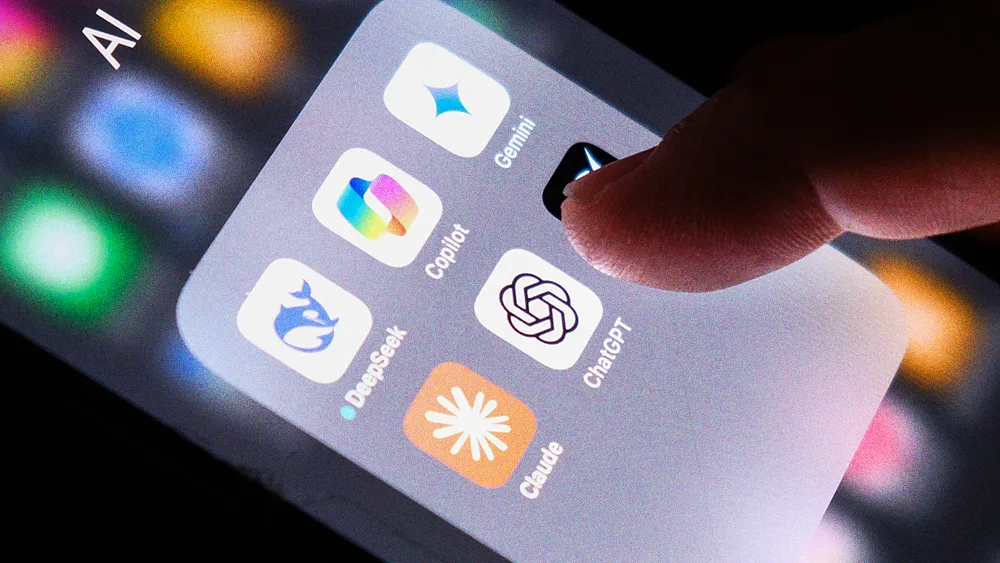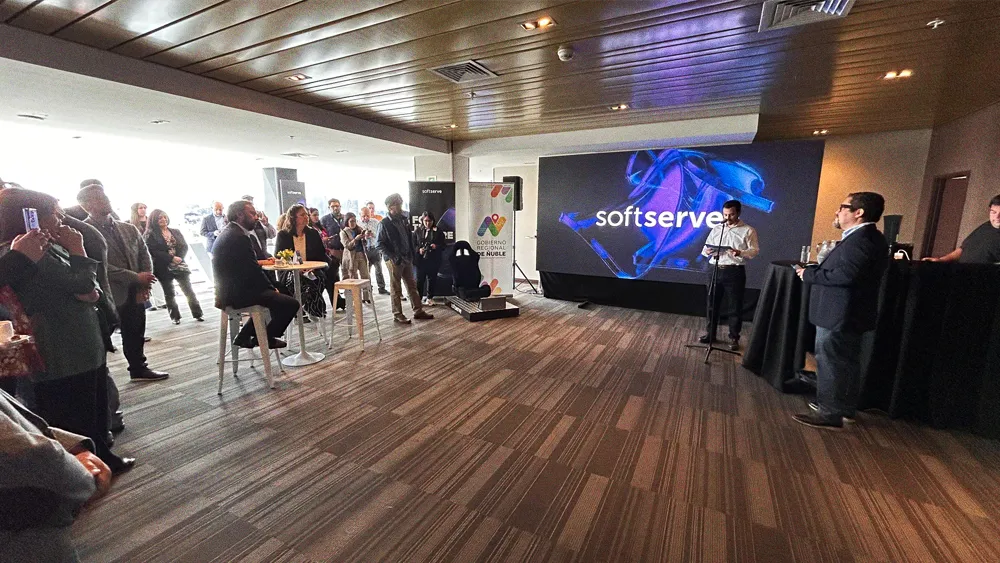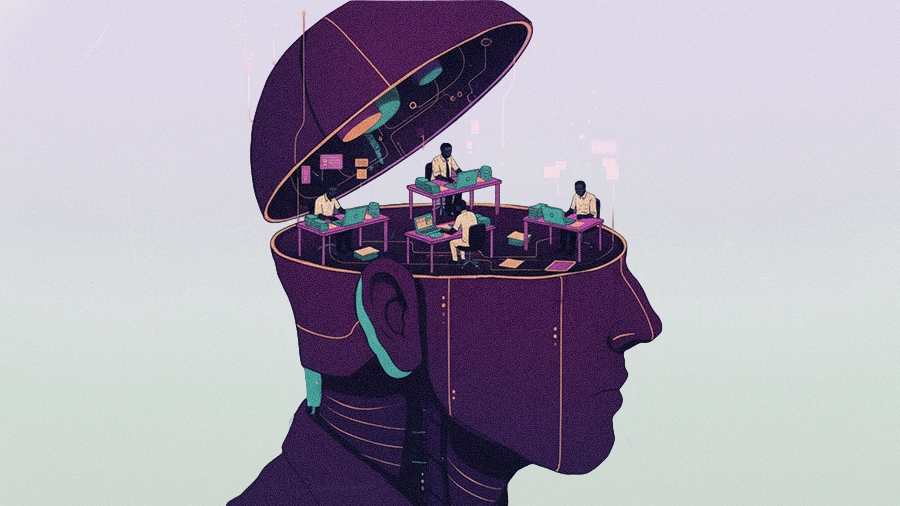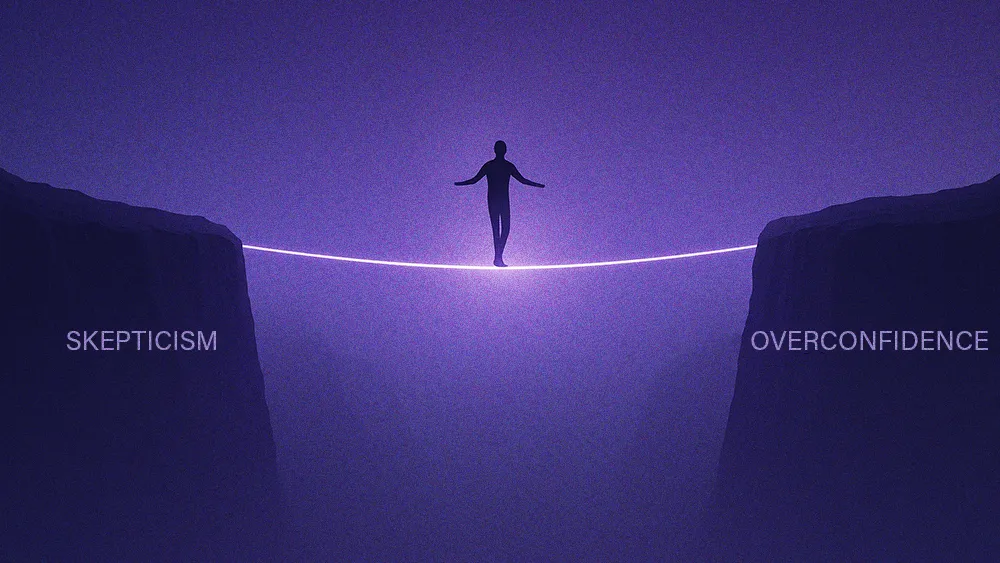An AI founder’s fix to the 9-9-6 model fueling longer hours and employee burnout

Key Points
While initially promising to save time, AI is instead driving a new era of overwork and burnout, with some tech companies now mandating six-day work weeks.
Anna Stepura, a three-time AI founder, explains that this paradox is fueled by AI’s “false efficiency,” irrational investor expectations, and the competitive pressure of universal AI adoption, which raises the baseline for all.
The result is a widening skills gap and a potential for performative overwork as employees, fearing AI-driven layoffs, feel compelled to work longer hours.
To counter this, a sustainable path requires ethical sprints for intense work periods, humans upgrading workflow orchestration skills, and systemic legal protections for workers.
AI will not make us work less. It pushes us to work more, harder, and for longer hours. For an employee, there should be clear boundaries. You don't want burned-out people in three or six months.

Anna Stepura
CEO
Anna Stepura
AI promised to give back precious time for strategic work. But in some tech corners, job descriptions now mandate a six-day workweek. Paradoxically, AI is increasingly seen as a competitive tool in these spaces, often pushing people to work more, harder, and longer, rather than saving them from mundane tasks.
For an expert’s take, we spoke with Anna Stepura, CEO of a new stealth venture and founder of AI marketing solutions firm Forsify.com, which serves clients like Y Combinator and Alchemist Accelerator. A three-time founder with ventures including HireGPT, an AI recruitment startup acquired by ApplicantQ, and AiSport, a sports tech company with a real-time AI coach, Stepura is all too familiar with the pressure to compete and the human cost it tends to carry.
“AI will not make us work less. It pushes us to work more, harder, and for longer hours. For an employee, there should be clear boundaries. You don’t want burned-out people in three or six months,” Stepura says. For her, it’s a personal experience that now informs her advocacy for more balanced, sustainable work approaches. Her own founder’s journey led her to burn out, she explains.
Highlighting the ethical line between a founder’s voluntary sacrifice and an employee mandate, Stepura questions the trade-off between extreme expectations and equity promises. In many cases, burnout prevents employees from staying long enough to benefit from what was promised in the first place. The result is high turnover for organizations and little reward for the employees who spend hours on the job.
The extreme saturation of AI ventures in concentrated areas fuels a hyper-competitive environment where employees, not just founders, feel immense pressure to succeed. “In San Francisco, you can find 100 to 150 AI startups within one mile,” Stepura says.
Welcome to the jungle: What was once an unspoken expectation in some tech circles now explicitly appears in job descriptions, mirroring the “9-9-6” culture of grueling hours popularized in China. “One friend interviewed at a well-funded startup, and the job description included a six-day work schedule. Many startups are doing that now,” she reports.
An offer you can refuse: The practice presents equity as a reward for extreme dedication, but Stepura questions whether it’s a fair or legal exchange for long hours, especially when burnout can prevent employees from ever cashing in. “They say you get equity for your outputs. But the question is, is it legal? I’m not sure,” she adds.
Compounding the challenge is the often uneven distribution of productivity gains. For example, Stepura points to the widening skills gap that’s at least partially attributable to a false sense of efficiency among average users.
Hurry up and wait: In fact, research from Stanford and Microsoft shows that any time saved during initial ideation is lost during an extended execution phase, Stepura explains. “AI actually shortens ideation time by half, but execution can take twice as long. You have to learn prompt engineering and refine the output, so overall, there’s almost no difference in total time spent.”.
Mind the gap: Excluding the small group of experienced users who are achieving real benefits with AI, this is the unfortunate reality for most workers right now, she continues. While experienced users accelerate, median users struggle even to get started. “AI productivity gains are not universal. They depend on the user’s experience. A mature AI user, for example, will achieve better outcomes.”
But efficiency is not exchanged for leisure, Stepura says. Instead of leveling the playing field, universal access to powerful tools has raised the stakes for everyone. “If you have a tool that lets you do 10 times more, will you stop? Will you dedicate 10 times less time? Or will you multiply your results by 10?” For her, it’s precisely this human inclination that drives the relentless pursuit of more.
The new normal: Once AI tools become universally accessible, they cease to be a competitive advantage, Stepura explains. They become the minimum standard, forcing everyone to adopt them simply to remain competitive. “When everyone has these 10x tools, it doesn’t create a universal advantage. It establishes a new bar for competition, a new basic speed for everyone,” Stepura states.
The 0.01% problem: The “new growth myth” creates an unsustainable cycle, Stepura continues. Likening it to the “gold-rush era,” she describes how the rare successes of a tiny fraction have set the benchmark that fuels intense pressure for all. “As a founder, I understand the pressure from investors to grow fast. High-profile cases of super-growth create an irrational expectation for all companies. Even though it’s only 0.01% of cases, it makes people believe it’s achievable for everyone.”
As one possible solution, Stepura outlines her three-part framework for leaders. The first stretch she calls an ethical sprint—a short, defined race that occurs only under clear conditions: a three-month timeframe at most and always tied to a specific, agreed-upon business goal. Here, teams must be rewarded for the achievement with compensation beyond base salary, she explains.
The second part of Stepura’s framework involves the human orchestrator. “The way we truly benefit from AI is if humans upgrade their skills to workflow orchestration. When a person knows how to orchestrate different systems, set up a workflow, and manage that flow, we can work the same five days but achieve the next level of results.” The final part is systemic oversight, where she emphasizes the need for “more strict laws regarding how humans are protected in their work environment.”
Ultimately, the conversation around AI and productivity needs to be reframed entirely, Stepura concludes. As AI adoption contributes to increased layoffs, a new dynamic will likely emerge where employees, driven by job insecurity, “volunteer” for longer hours to demonstrate their value. “There will be a new wave of layoffs because of AI. People will feel pressure to show their value by being willing to do more work. And which employer doesn’t like it when people deliver more and do extra hours?” Now, the challenge for leaders is to distinguish the subtleties between genuine productivity and performative overwork.
The way we truly benefit from AI is if humans upgrade their skills to workflow orchestration. When a person knows how to orchestrate different systems, set up a workflow, and manage that flow, we can work the same five days but achieve the next level of results.

Anna Stepura
CEO
Anna Stepura
The way we truly benefit from AI is if humans upgrade their skills to workflow orchestration. When a person knows how to orchestrate different systems, set up a workflow, and manage that flow, we can work the same five days but achieve the next level of results.

Anna Stepura
CEO
Anna Stepura
Related articles
TL;DR
While initially promising to save time, AI is instead driving a new era of overwork and burnout, with some tech companies now mandating six-day work weeks.
Anna Stepura, a three-time AI founder, explains that this paradox is fueled by AI’s “false efficiency,” irrational investor expectations, and the competitive pressure of universal AI adoption, which raises the baseline for all.
The result is a widening skills gap and a potential for performative overwork as employees, fearing AI-driven layoffs, feel compelled to work longer hours.
To counter this, a sustainable path requires ethical sprints for intense work periods, humans upgrading workflow orchestration skills, and systemic legal protections for workers.

Anna Stepura
Anna Stepura
CEO

CEO
AI promised to give back precious time for strategic work. But in some tech corners, job descriptions now mandate a six-day workweek. Paradoxically, AI is increasingly seen as a competitive tool in these spaces, often pushing people to work more, harder, and longer, rather than saving them from mundane tasks.
For an expert’s take, we spoke with Anna Stepura, CEO of a new stealth venture and founder of AI marketing solutions firm Forsify.com, which serves clients like Y Combinator and Alchemist Accelerator. A three-time founder with ventures including HireGPT, an AI recruitment startup acquired by ApplicantQ, and AiSport, a sports tech company with a real-time AI coach, Stepura is all too familiar with the pressure to compete and the human cost it tends to carry.
“AI will not make us work less. It pushes us to work more, harder, and for longer hours. For an employee, there should be clear boundaries. You don’t want burned-out people in three or six months,” Stepura says. For her, it’s a personal experience that now informs her advocacy for more balanced, sustainable work approaches. Her own founder’s journey led her to burn out, she explains.
Highlighting the ethical line between a founder’s voluntary sacrifice and an employee mandate, Stepura questions the trade-off between extreme expectations and equity promises. In many cases, burnout prevents employees from staying long enough to benefit from what was promised in the first place. The result is high turnover for organizations and little reward for the employees who spend hours on the job.
The extreme saturation of AI ventures in concentrated areas fuels a hyper-competitive environment where employees, not just founders, feel immense pressure to succeed. “In San Francisco, you can find 100 to 150 AI startups within one mile,” Stepura says.
Welcome to the jungle: What was once an unspoken expectation in some tech circles now explicitly appears in job descriptions, mirroring the “9-9-6” culture of grueling hours popularized in China. “One friend interviewed at a well-funded startup, and the job description included a six-day work schedule. Many startups are doing that now,” she reports.
An offer you can refuse: The practice presents equity as a reward for extreme dedication, but Stepura questions whether it’s a fair or legal exchange for long hours, especially when burnout can prevent employees from ever cashing in. “They say you get equity for your outputs. But the question is, is it legal? I’m not sure,” she adds.
Compounding the challenge is the often uneven distribution of productivity gains. For example, Stepura points to the widening skills gap that’s at least partially attributable to a false sense of efficiency among average users.
Hurry up and wait: In fact, research from Stanford and Microsoft shows that any time saved during initial ideation is lost during an extended execution phase, Stepura explains. “AI actually shortens ideation time by half, but execution can take twice as long. You have to learn prompt engineering and refine the output, so overall, there’s almost no difference in total time spent.”.
Mind the gap: Excluding the small group of experienced users who are achieving real benefits with AI, this is the unfortunate reality for most workers right now, she continues. While experienced users accelerate, median users struggle even to get started. “AI productivity gains are not universal. They depend on the user’s experience. A mature AI user, for example, will achieve better outcomes.”

Anna Stepura
Anna Stepura
CEO

CEO
But efficiency is not exchanged for leisure, Stepura says. Instead of leveling the playing field, universal access to powerful tools has raised the stakes for everyone. “If you have a tool that lets you do 10 times more, will you stop? Will you dedicate 10 times less time? Or will you multiply your results by 10?” For her, it’s precisely this human inclination that drives the relentless pursuit of more.
The new normal: Once AI tools become universally accessible, they cease to be a competitive advantage, Stepura explains. They become the minimum standard, forcing everyone to adopt them simply to remain competitive. “When everyone has these 10x tools, it doesn’t create a universal advantage. It establishes a new bar for competition, a new basic speed for everyone,” Stepura states.
The 0.01% problem: The “new growth myth” creates an unsustainable cycle, Stepura continues. Likening it to the “gold-rush era,” she describes how the rare successes of a tiny fraction have set the benchmark that fuels intense pressure for all. “As a founder, I understand the pressure from investors to grow fast. High-profile cases of super-growth create an irrational expectation for all companies. Even though it’s only 0.01% of cases, it makes people believe it’s achievable for everyone.”
As one possible solution, Stepura outlines her three-part framework for leaders. The first stretch she calls an ethical sprint—a short, defined race that occurs only under clear conditions: a three-month timeframe at most and always tied to a specific, agreed-upon business goal. Here, teams must be rewarded for the achievement with compensation beyond base salary, she explains.
The second part of Stepura’s framework involves the human orchestrator. “The way we truly benefit from AI is if humans upgrade their skills to workflow orchestration. When a person knows how to orchestrate different systems, set up a workflow, and manage that flow, we can work the same five days but achieve the next level of results.” The final part is systemic oversight, where she emphasizes the need for “more strict laws regarding how humans are protected in their work environment.”
Ultimately, the conversation around AI and productivity needs to be reframed entirely, Stepura concludes. As AI adoption contributes to increased layoffs, a new dynamic will likely emerge where employees, driven by job insecurity, “volunteer” for longer hours to demonstrate their value. “There will be a new wave of layoffs because of AI. People will feel pressure to show their value by being willing to do more work. And which employer doesn’t like it when people deliver more and do extra hours?” Now, the challenge for leaders is to distinguish the subtleties between genuine productivity and performative overwork.




